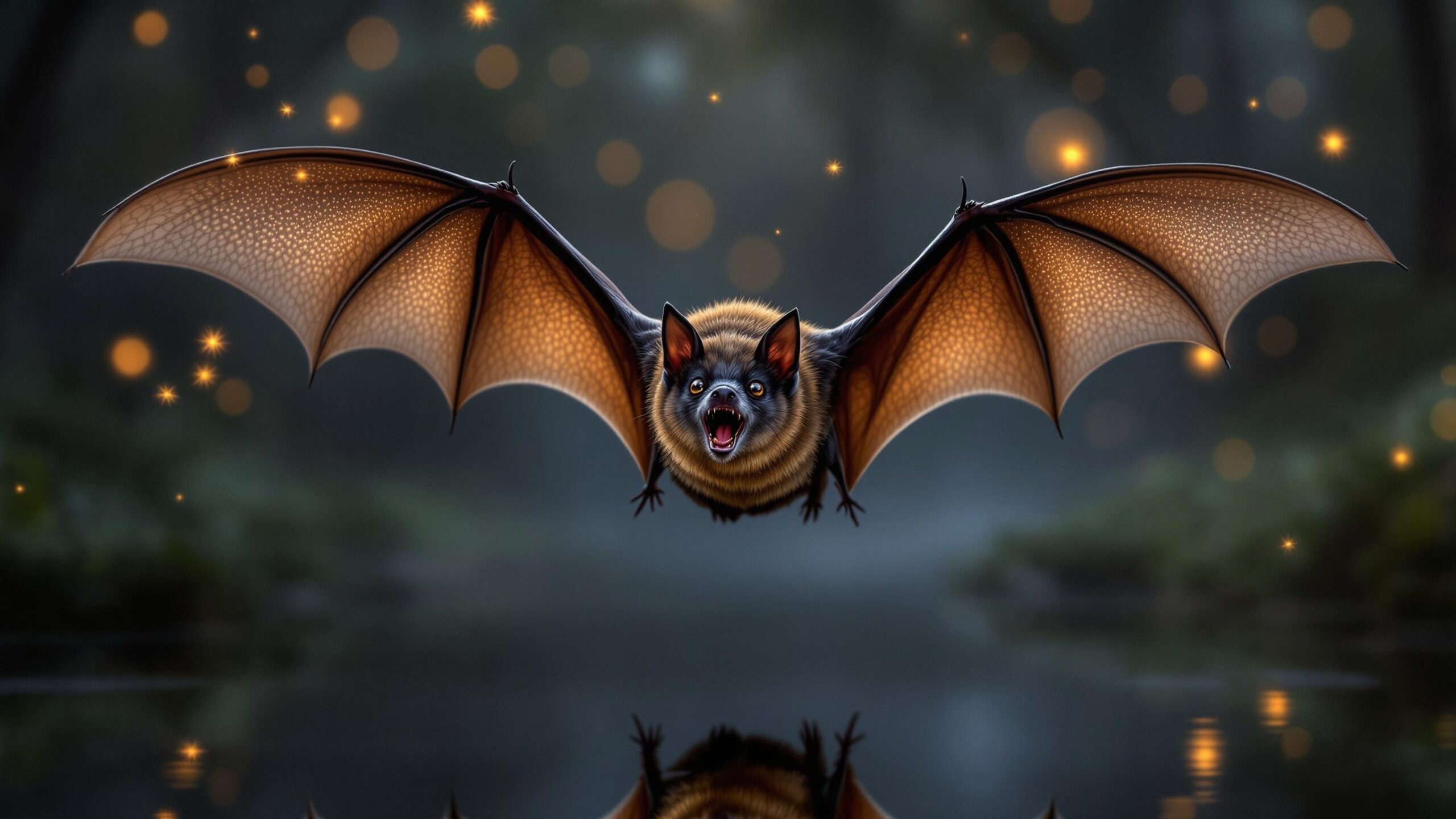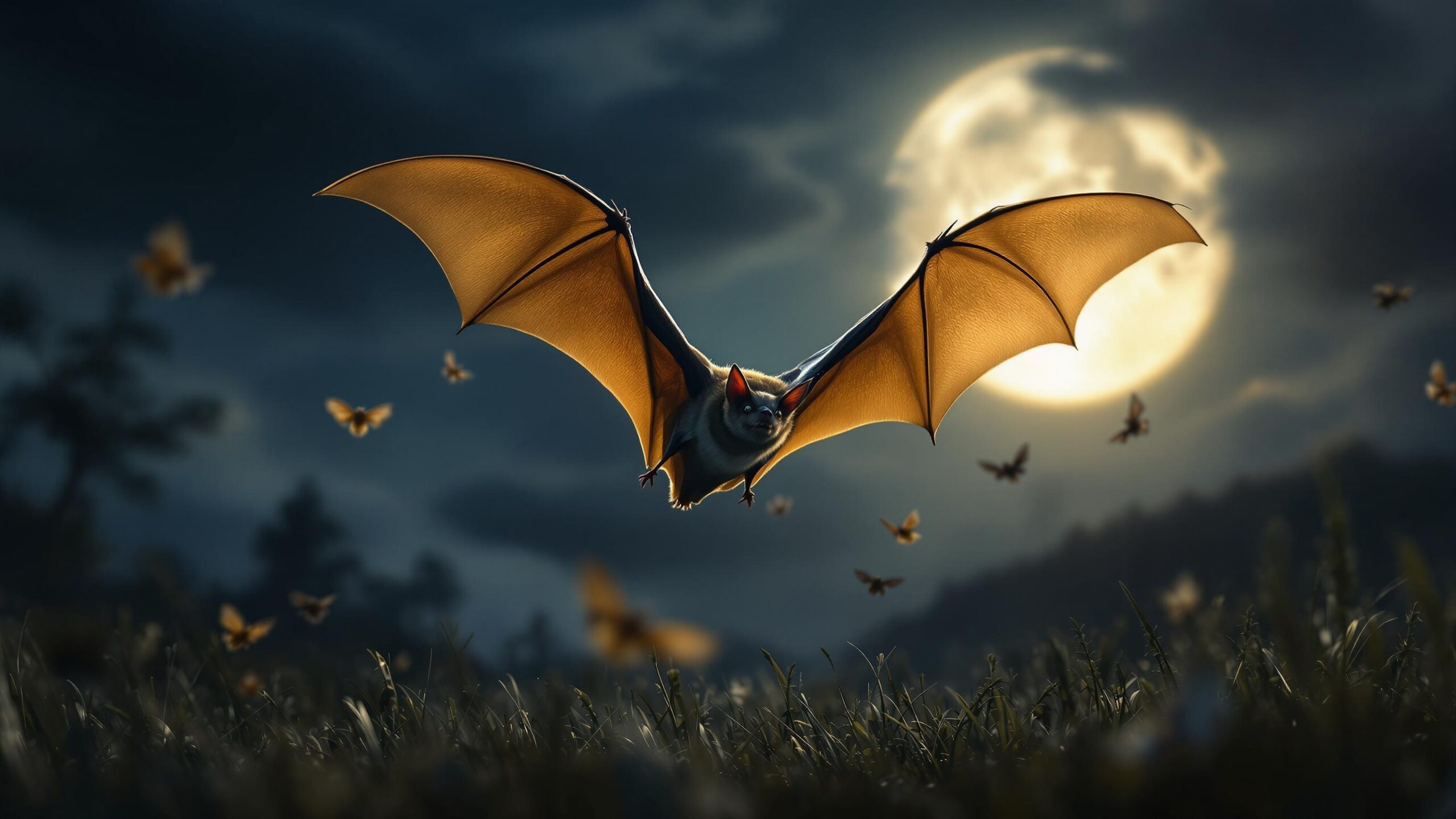Meet the Little Brown Bat
When most people think of bats, they imagine spooky silhouettes fluttering across the moon or eerie cave dwellers hanging upside-down. But one of North America’s most common and ecologically important bat species is far from frightening. Meet the little brown bat, scientifically known as Myotis lucifugus. As its name suggests, this bat is small, brown, and humble in appearance—but don’t let that modesty fool you. The little brown bat plays a vital role in controlling insect populations and maintaining ecosystem balance.
This species has captured the attention of scientists, conservationists, and nature lovers for decades. It’s a model of adaptability and endurance, yet recent environmental challenges have placed it in the conservation spotlight. In this in-depth reference, we’ll explore the biology, behavior, and survival strategies of the little brown bat—one of the most fascinating and underappreciated mammals in North America.
Physical Description: Small but Mighty
The little brown bat is exactly what its name implies: little and brown. Adults typically weigh between 5 to 14 grams, about the weight of a few paper clips, and measure 8 to 10 centimeters in length. Its wingspan, however, stretches impressively to about 22 to 27 centimeters, allowing for agile and highly maneuverable flight.
Its fur is glossy brown on the back and lighter on the underside, with a slightly darker face and wing membranes. These wings are not only delicate and translucent, but also incredibly strong and flexible, enabling this bat to perform aerobatic feats in pursuit of insects. Their ears are relatively short compared to some other bat species, and they have a tragus—a small pointed flap inside the ear—that aids in echolocation.
Despite their small size, little brown bats are surprisingly robust in terms of metabolic efficiency and energy use, particularly during periods of migration or hibernation.
More Articles
Habitat and Range: Widespread Across North America
Myotis lucifugus is native to a wide swath of North America, ranging from the forests of Alaska and Canada all the way down through much of the United States. Historically, they were found in nearly every type of environment from coastal lowlands and river valleys to mountainous forests and wetlands.
Their habitats shift seasonally. In warmer months, little brown bats can be found in a variety of roosts such as tree cavities, rock crevices, attics, barns, and bat houses. These summer roosts, especially for females, serve as maternity colonies where young are born and raised. In the winter, however, they retreat into cool, humid caves or abandoned mines to hibernate—sometimes in the thousands.
Roost site selection is critical to their survival. They prefer locations with stable temperatures, high humidity, and minimal disturbance. Their flexibility in habitat choice has helped them thrive in both wild and human-altered environments.
Echolocation: Navigating the Night
One of the most remarkable features of the little brown bat is its echolocation ability. This bat emits high-frequency sound pulses from its mouth or nose that bounce off objects in the environment and return as echoes. The bat’s brain rapidly processes these echoes to form an acoustic map of its surroundings.
This echolocation system is so finely tuned that little brown bats can detect and track tiny flying insects midair—even in complete darkness. It also allows them to avoid obstacles, find roosts, and communicate with one another through specialized calls. Each bat has its own “signature” echolocation pattern, which may also help them distinguish friends from strangers.
Echolocation is energy-intensive, but essential for their survival. Unlike birds that rely on vision, bats live in a world of sound—and for the little brown bat, that world is incredibly detailed and precise.
Diet and Feeding Behavior: The Ultimate Mosquito Predator
The little brown bat is an insectivore, meaning it feeds exclusively on insects. It is particularly fond of soft-bodied flying insects like moths, midges, caddisflies, beetles, and mosquitoes. A single little brown bat can consume hundreds to thousands of insects in one night, making it one of the most efficient natural pest controllers in the animal kingdom.
They typically begin hunting at dusk and continue feeding for several hours through the night. Flying low over ponds, forests, or open fields, they use their echolocation to detect and snatch prey midair. Sometimes they scoop insects into their wing membranes and transfer them to their mouths in flight—a behavior known as “aerial hawking.”
Their diet changes seasonally depending on availability, but their insect-hunting skills are always on display. By consuming vast quantities of insects, little brown bats help protect crops, reduce the need for chemical pesticides, and minimize the spread of mosquito-borne diseases.
Reproduction: Maternity Colonies and the Birth of Pups
Mating in little brown bats typically occurs in the fall, just before the bats enter hibernation. However, fertilization is delayed until spring, as females store sperm over the winter months. Once spring arrives and temperatures rise, fertilization occurs and pregnancy begins.
Gestation lasts approximately 50 to 60 days, and females give birth to a single pup in early summer—usually June or July. These births occur in maternity colonies, where groups of females roost together to raise their young. These colonies can range from a few dozen to several hundred individuals.
Newborn pups are hairless, blind, and completely dependent on their mothers. However, they grow rapidly, and within a month they can fly and begin to forage independently. Interestingly, mothers can locate their own pup among a crowded roost using a combination of scent and vocal cues.
Reproductive success is heavily influenced by environmental conditions, particularly temperature and food availability. A warm, insect-rich summer boosts pup survival, while a cold or rainy season can drastically reduce reproductive output.
Hibernation: A Test of Endurance
One of the most fascinating aspects of the little brown bat’s life cycle is its ability to hibernate. As cold weather sets in and insects disappear, these bats enter hibernation to survive the winter. They typically roost in caves, mines, or other underground sites with stable temperatures just above freezing and high humidity to prevent dehydration.
During hibernation, a little brown bat’s body temperature drops significantly, its heart rate slows from hundreds of beats per minute to just a few, and breathing becomes shallow and infrequent. This deep torpor conserves energy and allows them to survive for six to seven months without eating.
They periodically arouse to drink water and may even move slightly within the roost, but these awakenings are brief and costly in terms of energy. Any disruption to this delicate balance—such as human disturbance or illness—can have devastating consequences.

Threats and Conservation: Battling White-Nose Syndrome
While the little brown bat was once one of the most abundant bat species in North America, it has suffered severe population declines in recent years due to a disease known as white-nose syndrome (WNS). Caused by the fungus Pseudogymnoascus destructans, this condition infects hibernating bats and causes frequent arousals, leading to energy depletion and death.
Since its discovery in North America in 2006, white-nose syndrome has killed millions of bats, and the little brown bat has been especially hard-hit. In some regions, populations have declined by over 90 percent. As a result, the species is now considered endangered or threatened in several U.S. states and Canadian provinces.
Beyond disease, threats to the little brown bat include habitat loss, pesticide use (which reduces their insect prey), climate change, and disturbance of hibernation sites. Despite these challenges, conservationists are working diligently to protect remaining populations through research, cave closures, captive breeding programs, and public education.
The good news is that some bat colonies have shown signs of resilience or even potential resistance to the disease. Protecting these surviving groups is now a top priority in bat conservation.
Cultural and Scientific Significance
Bats often carry a reputation steeped in mystery, folklore, and even fear, but the little brown bat offers a chance to shift the narrative. Rather than haunting Halloween symbols, these animals are hardworking, beneficial, and surprisingly gentle creatures.
Scientists have long studied Myotis lucifugus for insights into echolocation, aerodynamics, and hibernation biology. In fact, their ability to suspend metabolic processes during winter has intrigued researchers interested in applications ranging from medicine to space travel.
Culturally, bats are beginning to gain more recognition for their ecological roles. Public outreach programs and bat-watching events are helping people see these creatures in a new light—one that emphasizes admiration over fear.
Living With Bats: Coexistence and Appreciation
Because they often roost in buildings, barns, and attics, little brown bats sometimes come into contact with people. While this can occasionally be an inconvenience, it also presents an opportunity for coexistence. Homeowners can encourage bats to roost nearby—but not inside—by installing bat houses, which provide safe, warm places for summer colonies.
It’s important not to handle bats directly, as they are protected by law in many areas and may carry rabies in rare cases. However, observing them from a distance—especially at dusk when they emerge to feed—can be a magical experience.
Gardeners and farmers may also benefit from attracting bats, as these insectivores can reduce the need for pesticides. In this way, little brown bats support both natural ecosystems and human agriculture.
Fast Facts and Fascinations
The little brown bat is full of surprises. It can fly at speeds of up to 20–25 kilometers per hour, change direction in an instant, and consume over 1,000 insects in a single night. It has one of the longest lifespans relative to body size of any mammal, with individuals living more than 30 years in the wild.
Despite their tiny size, these bats migrate long distances between their summer and winter habitats—sometimes hundreds of kilometers. Their ability to remember routes and return to the same roosts year after year is still a subject of ongoing research.
They’re also known for their complex vocalizations, including social calls that differ from echolocation pulses. These sounds help bats coordinate in flight, find roost mates, and navigate group behavior.
Why the Little Brown Bat Matters
The little brown bat may be small, but its impact is immense. From insect control and ecosystem balance to scientific discovery and cultural appreciation, Myotis lucifugus embodies the value of even the tiniest wildlife. Its resilience in the face of adversity is a example of nature’s adaptability, and its future depends on our willingness to understand and protect it.
As public interest in biodiversity grows and conservation science advances, the story of the little brown bat reminds us that saving species starts with knowing them. With knowledge comes empathy, and with empathy comes action.
Whether flitting through a summer evening sky or hanging quietly in a winter cave, the little brown bat is a marvel worth celebrating—one flap of leathery wings at a time.

